Fire stations are more than just garages for fire trucks. They’re the nerve centers of emergency response, where every second counts and every design choice can mean the difference between life and death. As a firefighter and lighting designer, I’ve experienced firsthand how station design impacts both response time and firefighter health. That perspective shapes my approach to fire station design, where two priorities always rise to the top: fire station safety and the need for speed.
The Need for Speed: Designing for Rapid Response
Time is the enemy in any emergency. The faster firefighters can get from one spot to a fire engine, the better the outcome. But outdated station layouts can turn this sprint into an obstacle course.
Modern fire station design is shifting away from tradition and toward intention. We’re talking about layouts that are stripped of delays, direct lines from sleeping quarters to apparatus bays, no zigzagging through mazes of doors, and equipment that’s exactly where it needs to be, every time. Stations should be built like they understand urgency, not like they were designed by someone who’s never had to suit up at 3 a.m.
Take Longmont Fire in Colorado. Their two newest stations are a case study in what happens when safety and speed are actually built into the walls. Each firefighter has a private sleeping room. That’s not luxury, it’s a performance tool. Better rest means sharper decisions during chaotic calls. Their turnout gear is stored in negative-pressure rooms to reduce carcinogen exposure, and every firefighter has two sets, always clean and ready. Even the alert system is strategic, waking only the personnel required. It’s smart, it’s intentional, and it reflects a department that understands efficiency without sacrificing well-being.

Safety First: Preventing Injuries Through Design
Let’s not pretend that the danger starts at the fire scene. Many injuries happen inside the station, and too many of them are avoidable. The layout itself can either support a firefighter’s body, or slowly break it down.
Injury prevention starts with flow. Wide, unobstructed paths reduce trips and allow for smoother transitions during high-speed exits. Storage that makes sense, no awkward reaches, no bending over for 50-pound bags, keeps backs and joints in the game longer. And yes, decontamination zones that actually function as barriers instead of afterthoughts are non-negotiable. Cross-contamination is a real threat, and the station needs to be laid out to stop it before it spreads.
It is not about fancy design moves. It is about designing for longevity, both for the building and the people working inside it. Every choice should ask: how does this support the safety of the crew? If it doesn’t, it doesn’t belong.
Where Speed and Safety Meet
People love to treat speed and safety like they are on opposite sides of a scale, but done right, design supports both.
Take gear lockers placed directly beside the apparatus bay. That is not just about saving time, it is about eliminating a scramble that creates trip hazards and stress. Non-slip flooring in high-movement areas is not just a nice touch, it is a quiet safety net that catches someone moving fast. Even lighting plays a role. Stations with well-thought-out lighting keep people alert, reduce fatigue, and support mental clarity in those split-second moments when hesitation is not an option.
These are not bells and whistles. This is baseline. And yet, most stations are still catching up.
The Long Game: Designing for Human Health
We talk a lot about protecting the public. But what about protecting the firefighters? You do not send someone into a fire with worn-out gear, so why send them into their day from a station that drains them?
Firefighters carry massive physical and emotional loads. The design of their station should reflect that. Dedicated fitness spaces support long-term health and reduce injury risk. Quiet zones with natural light create space for mental decompression after traumatic calls. Air quality systems should be robust enough to keep indoor spaces clean even when the trucks roll out a dozen times a day.
There is no excuse for stations that look like they were designed to house equipment and not people. The health of your crew is a design priority, not an afterthought. If the station can’t support recovery, it is contributing to burnout.
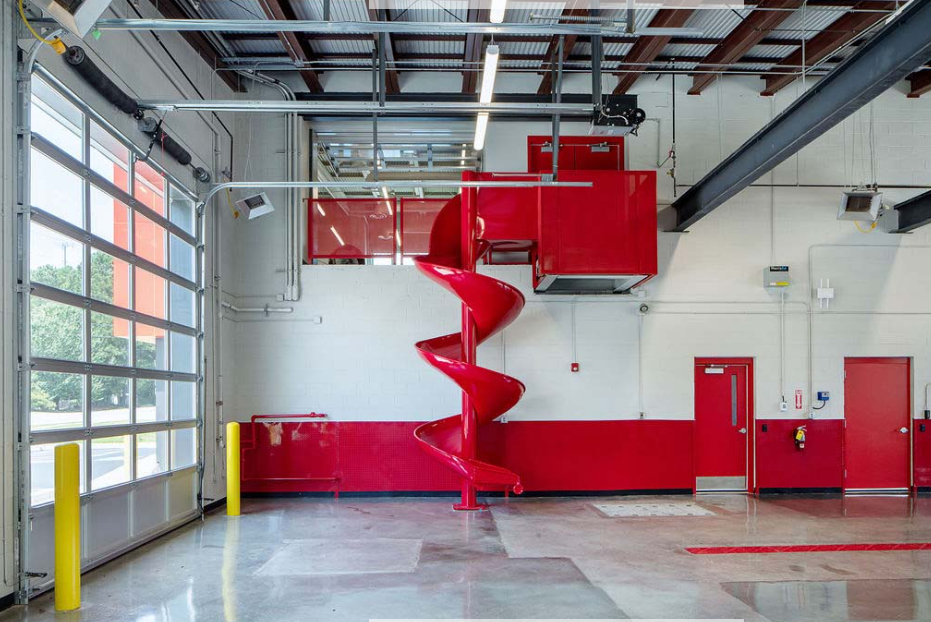
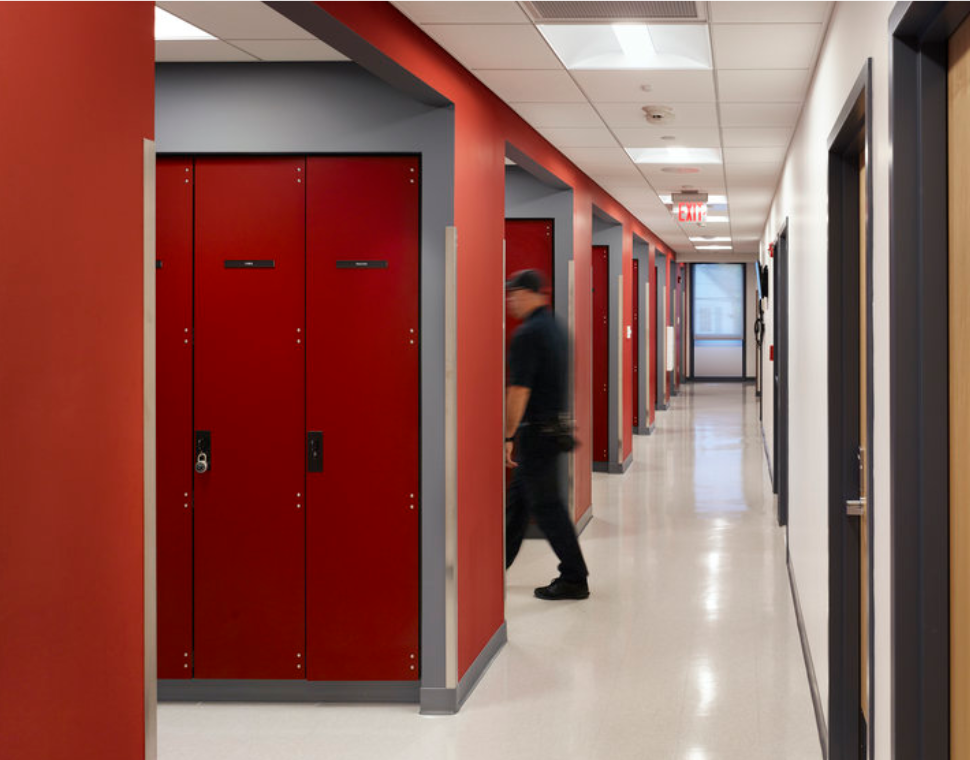
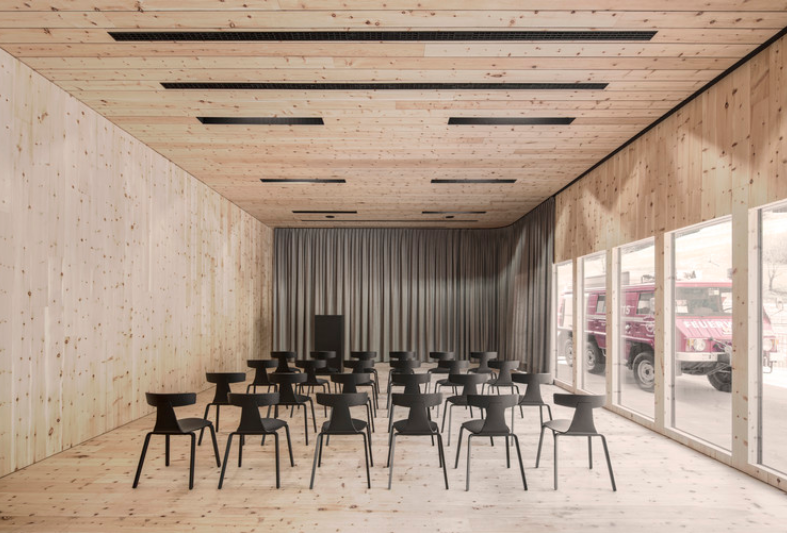
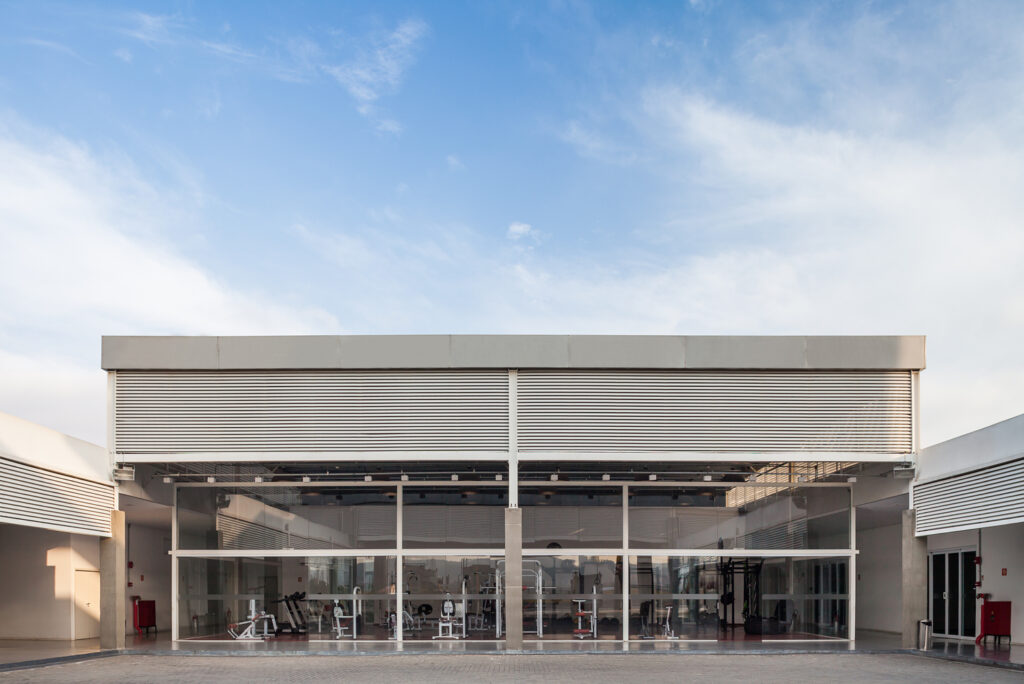
Building the Future of Fire Stations
As we evolve our understanding of emergency services, it becomes clear that fire stations need a complete mindset shift. They are not just functional buildings. They are performance hubs, recovery centers, and safe houses all rolled into one.
So what does the next generation of fire station design look like? It is not about gimmicks or high-priced finishes. It is about aligning every detail with real-world needs. Here’s what that looks like in practice:
- Clear, direct pathways from living quarters to trucks
- Private sleeping quarters to improve rest and reaction time
- Durable, ergonomic storage that reduces physical strain
- Real decontamination zones that prevent harmful spread
- Lighting systems that support alertness, safety, and mood
- HVAC and materials that prioritize air quality and health
- Spaces that promote mental reset, not just physical readiness
This is not a wishlist, this is what should already be standard. For the departments willing to do things differently, the payoff is real, fewer injuries, faster response times, and a team that feels supported on every level.
Want to Follow Along as I Build?
Follow my studio Wylderwoods Lighting & Design, where I specialize in public health design for essential services, especially fire stations. My goal is to change the way we think about these spaces, starting with how lighting and layout can impact every second of a firefighter’s shift.
If you’re into forward-thinking design that supports the people doing life-saving work, you’re in the right place.
Follow my journey, get inspired, and explore how intentional design can reshape the future of emergency response.
Explore More About Fire Station Design
Join the Email List
Connect on Instagram
Fire stations are more than just garages for fire trucks. They’re the nerve centers of emergency response, where every second counts and every design choice can mean the difference between life and death. As a firefighter and lighting designer, I’ve experienced firsthand how station design impacts both response time and firefighter health. That perspective shapes my approach to fire station design, where two priorities always rise to the top: fire station safety and the need for speed.
The Need for Speed: Designing for Rapid Response
Time is the enemy in any emergency. The faster firefighters can get from one spot to a fire engine, the better the outcome. But outdated station layouts can turn this sprint into an obstacle course.
Modern fire station design is shifting away from tradition and toward intention. We’re talking about layouts that are stripped of delays, direct lines from sleeping quarters to apparatus bays, no zigzagging through mazes of doors, and equipment that’s exactly where it needs to be, every time. Stations should be built like they understand urgency, not like they were designed by someone who’s never had to suit up at 3 a.m.
Take Longmont Fire in Colorado. Their two newest stations are a case study in what happens when safety and speed are actually built into the walls. Each firefighter has a private sleeping room. That’s not luxury, it’s a performance tool. Better rest means sharper decisions during chaotic calls. Their turnout gear is stored in negative-pressure rooms to reduce carcinogen exposure, and every firefighter has two sets, always clean and ready. Even the alert system is strategic, waking only the personnel required. It’s smart, it’s intentional, and it reflects a department that understands efficiency without sacrificing well-being.

Safety First: Preventing Injuries Through Design
Let’s not pretend that the danger starts at the fire scene. Many injuries happen inside the station, and too many of them are avoidable. The layout itself can either support a firefighter’s body, or slowly break it down.
Injury prevention starts with flow. Wide, unobstructed paths reduce trips and allow for smoother transitions during high-speed exits. Storage that makes sense, no awkward reaches, no bending over for 50-pound bags, keeps backs and joints in the game longer. And yes, decontamination zones that actually function as barriers instead of afterthoughts are non-negotiable. Cross-contamination is a real threat, and the station needs to be laid out to stop it before it spreads.
It is not about fancy design moves. It is about designing for longevity, both for the building and the people working inside it. Every choice should ask: how does this support the safety of the crew? If it doesn’t, it doesn’t belong.
Where Speed and Safety Meet
People love to treat speed and safety like they are on opposite sides of a scale, but done right, design supports both.
Take gear lockers placed directly beside the apparatus bay. That is not just about saving time, it is about eliminating a scramble that creates trip hazards and stress. Non-slip flooring in high-movement areas is not just a nice touch, it is a quiet safety net that catches someone moving fast. Even lighting plays a role. Stations with well-thought-out lighting keep people alert, reduce fatigue, and support mental clarity in those split-second moments when hesitation is not an option.
These are not bells and whistles. This is baseline. And yet, most stations are still catching up.
The Long Game: Designing for Human Health
We talk a lot about protecting the public. But what about protecting the firefighters? You do not send someone into a fire with worn-out gear, so why send them into their day from a station that drains them?
Firefighters carry massive physical and emotional loads. The design of their station should reflect that. Dedicated fitness spaces support long-term health and reduce injury risk. Quiet zones with natural light create space for mental decompression after traumatic calls. Air quality systems should be robust enough to keep indoor spaces clean even when the trucks roll out a dozen times a day.
There is no excuse for stations that look like they were designed to house equipment and not people. The health of your crew is a design priority, not an afterthought. If the station can’t support recovery, it is contributing to burnout.




Building the Future of Fire Stations
As we evolve our understanding of emergency services, it becomes clear that fire stations need a complete mindset shift. They are not just functional buildings. They are performance hubs, recovery centers, and safe houses all rolled into one.
So what does the next generation of fire station design look like? It is not about gimmicks or high-priced finishes. It is about aligning every detail with real-world needs. Here’s what that looks like in practice:
- Clear, direct pathways from living quarters to trucks
- Private sleeping quarters to improve rest and reaction time
- Durable, ergonomic storage that reduces physical strain
- Real decontamination zones that prevent harmful spread
- Lighting systems that support alertness, safety, and mood
- HVAC and materials that prioritize air quality and health
- Spaces that promote mental reset, not just physical readiness
This is not a wishlist, this is what should already be standard. For the departments willing to do things differently, the payoff is real, fewer injuries, faster response times, and a team that feels supported on every level.
Want to Follow Along as I Build?
Follow my studio Wylderwoods Lighting & Design, where I specialize in public health design for essential services, especially fire stations. My goal is to change the way we think about these spaces, starting with how lighting and layout can impact every second of a firefighter’s shift.
If you’re into forward-thinking design that supports the people doing life-saving work, you’re in the right place.
Follow my journey, get inspired, and explore how intentional design can reshape the future of emergency response.
Explore More About Fire Station Design
Join the Email List
Connect on Instagram
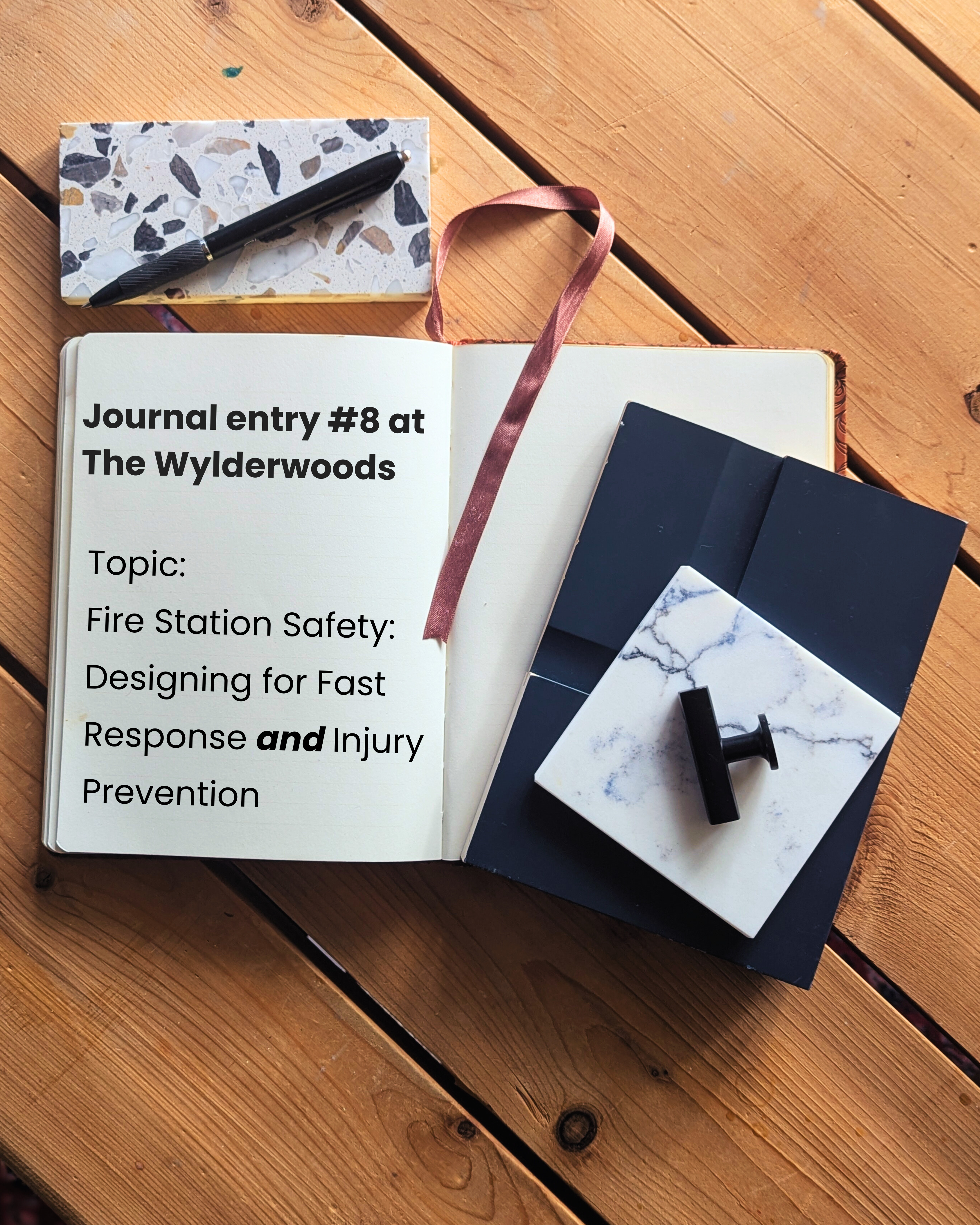
LEAVE A COMMENT
Comments